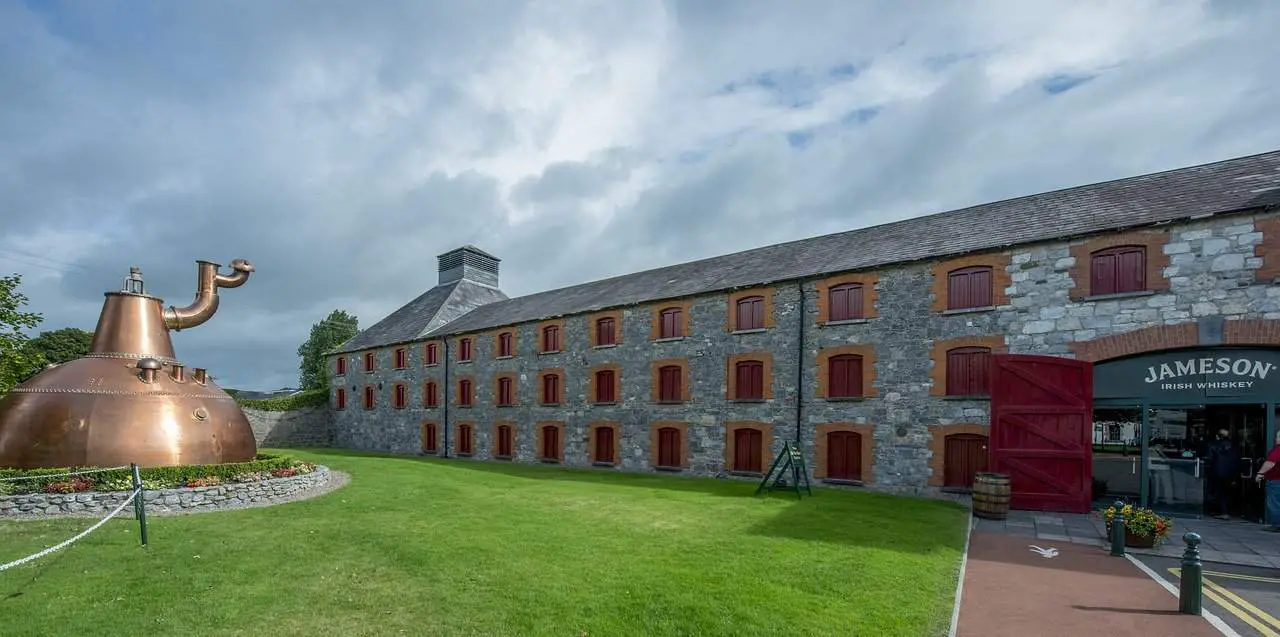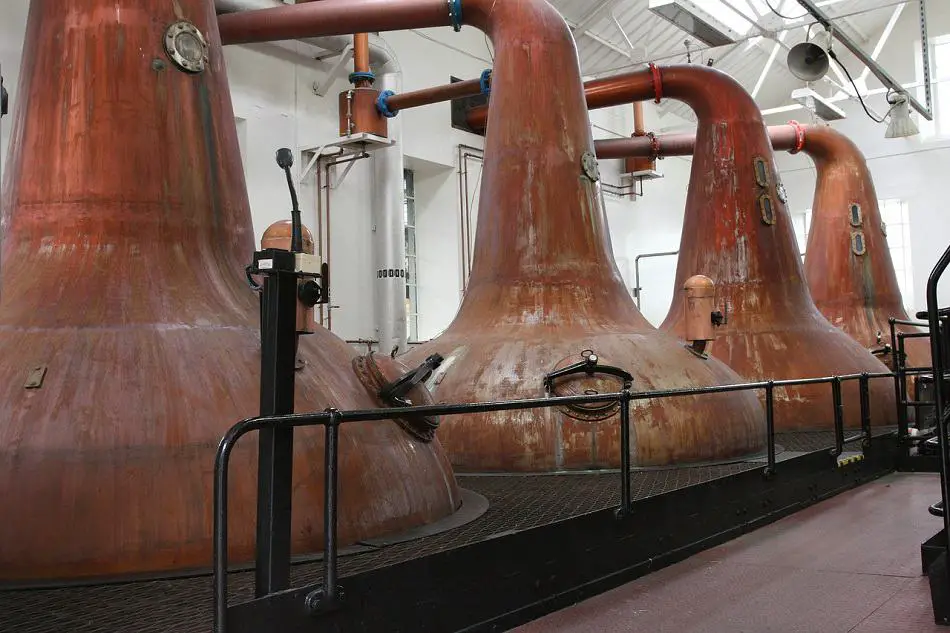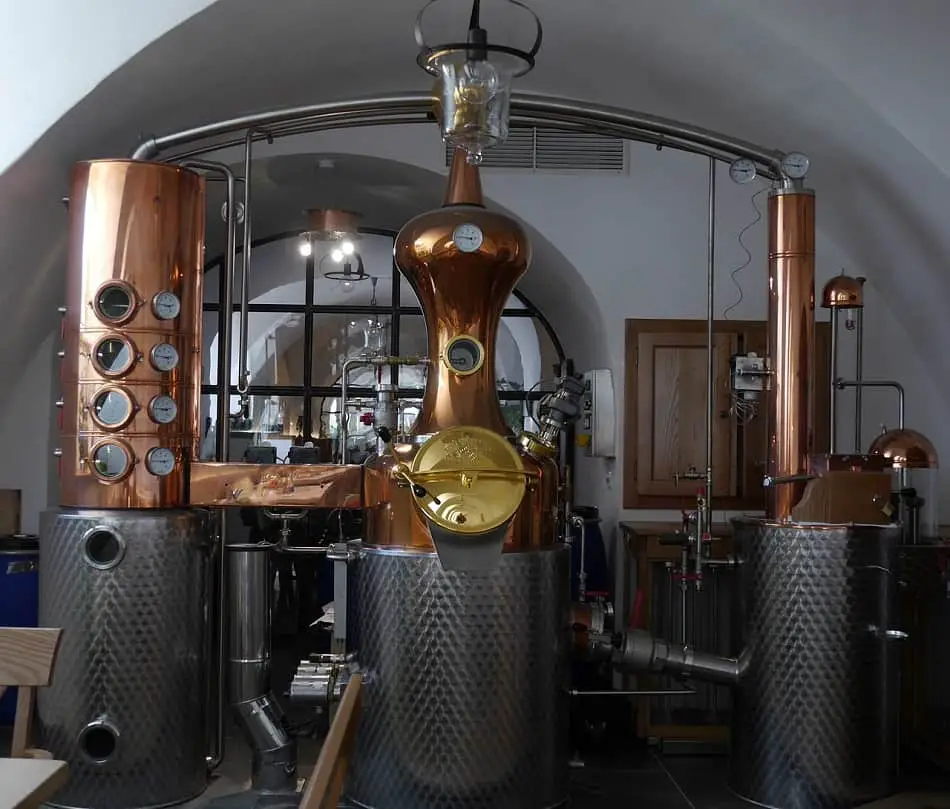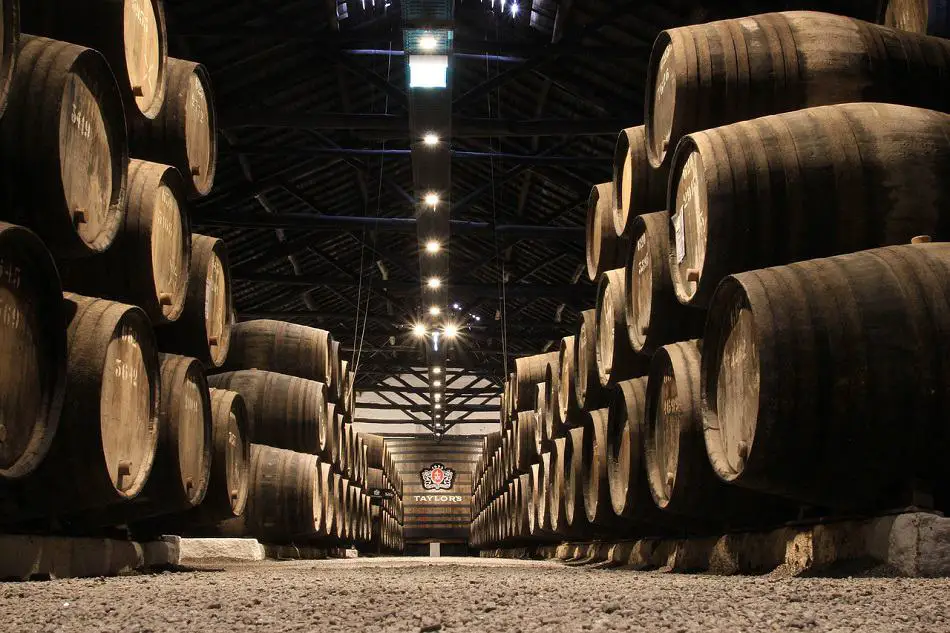It’s amazing that the most wonderous drink in the world is made from only three simple and naturally occurring substances. Grain, water and yeast. How whiskey is made from them is a little more complicated with seven stages to a process that’s the same the world over, though each distillery’s slight variations affects the taste of the final product. This leads as a happy consequence to many types of whiskey for us to enjoy.
Most people already know one thing about how whiskey is made and that is that the process can take decades to complete. Especially for the better-quality whiskeys.
But this should not be a cause for any concern. You won’t have to wait any time for a bottle of twenty-year-old whiskey because people have been making whiskey for at least 500 years.
We just have to do out bit to ensure our children and children’s children have enough.
And I’m still planning on having some in 40 years.

What Whiskey Is Made Of: The Ingredients
The ingredients used for making whiskey are:
Grain: This will vary depending on the type of whiskey being made but the most commonly used grains include barley, corn, wheat, oats, and rye.
Even whiskeys made of grains other than barley usually contain a small amount of malted barley as it provides the enzyme (amylase) needed for mashing. It’s inclusion is also a requirement if they are produced in Ireland or Scotland.
Don’t know what malt barley is? Don’t know what mashing is? Don’t worry all will become clear.
Don’t know what Ireland or Scotland is? You’re in big trouble.
Water: Not much explanation needed here. I hope. Just that the water should be clean, clear and free from impurities otherwise it can make the whiskey taste unpleasant. Because of the importance of water in how whiskey is made, a large number of distilleries are located next to a river or a lake.
Yeast: Usually a hybrid of brewers and distiller’s yeast as the former develops more aromatic flavors while the later produces more alcohol. Each distillery may have its own yeast strain.
How Whiskey Is Made: An Overview
The simple explanation or overview of how whiskey is made is as follows:
The starches of a grain are accessed, converted into soluble sugars and are then turned into alcohol.
The alcohol is distilled to increase the alcohol content and then aged in wooden barrels. It’s then blended and bottled.
Simple really.
Differences in How Whiskey Is Made Lead to Differences in Taste
While the general process for how whiskey is made is basically the same the world over, there are numerous possible variations that can occur, the slightest of which will affect the taste of the final product.
The type of grain (and variety of a given grain) used will lead to a different taste as will the type of water. Water tastes different not only between countries but also within countries. The taste of water is affected by the minerals it picks up from passing over or through granite, peat or other rock. The same applies to the strain of yeast that’s used.
The taste of the whiskey is also affected by the type of fuel used in the heating part of the malting process, how long the malted barley is heated for, how long the grain is fermented for, how many times the alcohol is distilled, the shape of the stills used in the distillation process, the type of barrels used for the aging process, the length of time the whiskey is aged and how (or not) the whiskey is blended.
Don’t worry I shall point these all out as we go along.
But this does explain why there are so many different types of whiskeys. As does a whiskey’s delicious taste.
Now we’re ready for a more detailed view of how whiskey is made.
How Whiskey Is Made: The Seven Stages
The seven stages in the whiskey making process are:
- Malting
- Mashing
- Fermentation
- Distillation
- Aging / Maturation
- Blending
- Bottling
Stage 1: Accessing the Starches by Cooking or Malting
All grains except barley are ground into meal in a gristmill and cooked with water to break down the cellulose walls that contain the starch granules.
Barley needs to be specially treated to access its starches. This is done by malting. The barley is soaked in warm water after which it’s spread out on the floor of the malting house and left to partially sprout or germinate. It’s turned regularly to maintain a constant temperature so that all grains germinate equally. This takes about five days.
When the barley grain opens the starch secrets the enzyme amylase which in the next stage will convert starches to sugar.
The germination process is stopped by spreading the barley on the grids of a kiln to dry with hot air from below. The heat is kept below 55°C so that the enzyme is not destroyed.
When making Scotch whiskey, peat is used to fuel the kiln and the type of peat used and the length of time the germinated barley grains are dried in the peat smoke will affect the final flavor of the whiskey. Peat is what gives Scotch whiskey its smoky taste.
The dried malt is then, like other grains, ground down into a coarse flour or grist in a mill, and husks and other debris are removed.
Stage 2: Mashing – Converting the Starches Into Sugars
The cooked grain or malted barley is mixed with warm water. It’s put into a large vessel called a mash tun or tub and stirred for several hours to convert the starches in the grain into sugars.
When making Scotch malt whiskey only malted barley is used and the enzyme, amylase it produced in the previous stage, will convert its starches into sugars. When making other grain whiskeys the particular grain will be used as well as a small amount of malted barley because only malted barley has the starch-to-sugar converting enzyme. The amylase in the malted barley will convert the starches in the particular grain into sugars.
After a few hours the mixture becomes a thick porridge-like sugar-rich liquid known as mash.
When making Scotch malt whiskey the sugars in the malt dissolve and are drawn off through the bottom of the mash tun. The resulting liquid is called wort. This is done three times and the water temperature is increased each time to extract the maximum amount of sugar. Only wort from the first two times is used, the third is put into the next batch of grist.
Stage 3: Fermentation – Converting the Sugars Into Alcohol
The mash if making grain whiskeys or wort if making Scotch malt whiskey is cooled and pumped into large traditionally wooden but now stainless steel (mostly) tanks called washbacks.
Here yeast is added – the strain of which also affects the final taste of the whiskey – and fermentation begins.
It takes 48-96 hours for the yeast to turn the sugars into alcohol, although some distilleries let it go for longer which will also affect the final taste.
You now have distiller’s beer or wash which contains 5%-10% ABV. You could use this liquid to brew beer but instead something better is done.
And I don’t think I need to spell out what. After all, there’s a clue in the, ‘How Whiskey Is Made’ part of the title.
Stage 4: Distillation – Converting 5%-10% ABV Into 65%-95% ABV
Distillation is the process by which a liquid is heated until it becomes a vapor and then condensed back into liquid again. In distilling a spirit, you boil the distiller’s beer or wash. The alcohol, which boils at a lower temperature than the water in the fermented liquid, vaporises and rises off the rest of the liquid so it can be separated, concentrated, condensed and collected.
The type of still used depends on the type of whiskey being made.
4 pot stills

This type of still is usually used for producing malt whiskeys from Scotland, Ireland and the United States.
A pot still has a bowl shape at the bottom and narrow neck at the top.
The material a pot still is made of, it’s size and shape affects the character and flavor of the whiskey. It’s made from copper which helps strip spirits of unwanted flavor and aroma compounds that would make it unpleasant to drink. The size will determine which aromatic molecules become a gas and make it up and over the neck and the shape because taller stills with longer necks create soft, finer and lighter spirits while shorter fatter stills will produce stronger and more intense fuller and richer spirits.
The distiller’s beer or wash enters the first still called the wash still and is heated. The liquid vaporises and rises up the still and condenses when it reaches the neck turning into a liquid once again with about 20% ABV. This liquid, now known as low wines, is passed to a second smaller still known as the spirit still or low wines still for a second distillation to produce 65%–70% ABV.
In Scotland the distiller’s beer or wash is traditionally distilled twice and in Ireland three times although there are exceptions.
Alcohols from the beginning of the distillation, the foreshoots or the heads, are high in alcohol and may be dangerous to drink and alcohols from the end, the feints or tails, are weak but both are pungent and not great taste wise. Only alcohol from the middle or the heart of the distillation (60%-75% ABV) is used, and this is skilfully removed by a stillman and collected through the spirit safe – a locked box (preventing anyone tapping off the spirit and avoiding paying duty) with a glass front.
The stillman has to use his years of experience to judge the distillate by visual inspection and the measuring instruments on the spirit safe which indicate temperature and alcohol content, all from behind glass panels and without being able to come into contact with the spirit. He certainly can’t taste it. I know, shame. A job which could have had obvious benefits is ruined because of a tax issue.
The spirit safe can direct the flow of the distillate back to the low wines still for re-distillation or to the spirit receiver / spirit vat for … well receiving. The stillman has to judge when to do this and it may depend on the character of the whiskey being produced but in general when the alcohol content falls to 75% and the spirit no longer turns water cloudy (indicating the end of the foreshoots or heads) it’s directed to the spirit receiver. When the alcohol content falls to 60% (indicating the beginning of the feints or tails) the flow is switched back to the low wines still.
Model of a column, continuous or Coffey still

This type of still is used in producing bourbon, American whiskeys and grain Whiskeys from Scotland and Ireland.
It has three different names after three different aspects. It’s called a Coffey still after the person who patented it, a continuous still due to the fact it sustains a constant process of distillation and a column still because it’s in the shape of a … well I’m sure you can work this one out for yourself.
Also made from copper to strip spirits of unwanted flavor and aroma compounds, they can vary in size but can be a couple of stories high. A series of perforated plates lie along the length of the column and capture husks and other grain remnants.
The distiller’s beer or wash is poured in from the top and passes through the perforated plates as it descends. At the same time, hot steam rises from the bottom and meets the descending liquid. The steam is very hot at the bottom of the still and becomes cooler as it rises, but since alcohol boils at a lower temperature the steam will still vaporize the alcohol higher up as it meets the falling wash.
The wash with its alcohols removed falls to the bottom while the lighter alcohol vapors are pushed upwards. Whenever they hit one of the perforated plates they condense, and they are then directed into the condenser where they are condensed back into a liquid.
It’s then distilled a second time.
Column stills can produce up to 95% ABV.
Tennessee whiskey is then filtered through charcoal (produced by burning word from sugar maples) which results in a particularly smooth whiskey. It may even be filtered through charcoal once again after being aged to make it even smoother.
Stage 5: Aging / Maturation

The distilled liquid is placed into barrels and stored. Water is added to reduce the alcohol content to 50%–60% for American whiskeys and 65% or higher for Scotch whiskeys.
It’s at this stage where whiskey gets 80% of its flavor.
During barrel storage, changes in temperature and humidity cause the distilled liquid to seep into the wood of the barrel and then back out again picking up all sorts of chemicals (wood sugars, vanillin, lactones, tannins and other compounds) in the process. The more this occurs the more the wood of the barrel transmits different and intricate flavors to the liquid.
At the same time the chemicals remove some of the unpleasant sulphury notes and some of the lighter and more volatile compounds evaporate through the barrel walls – otherwise known as the angel’s share.
The upshot of all this is that some of the whiskey’s harshness is removed, making it smoother, while plenty of flavor is added, giving it much of its character. It also gets its golden color.
Of course, various factors in the aging / maturation process determine the flavor of the whiskey. One is the wood the barrels are made of (usually American white Oak barrels) and whether the wood is toasted or charred. Bourbon, and other types of American whiskey must be aged in new charred oak barrels while in other countries the type of oak and its previous use are left up to the producer.
Second is the length of time the whiskey is aged. In Scotland you need to age whiskey for three years and a day before it can legally be called whiskey, but most single malts lie in barrels for eight, ten, twelve, or fifteen years. Or longer. Excellent single malts are aged for 12 to 21 years.
Third is the air quality, temperature and humidity of the environment the whiskey is stored in. This is because wood is porous. Scotch whiskeys are aged in cool, wet conditions, so they absorb water and become less alcoholic. American whiskeys are aged in warmer, drier conditions so they lose water and become more alcoholic.
During aging, samples of whiskey are evaluated by experienced tasters to determine if it is mature. About 0.2%-0.6% of the alcohol a year is lost to evaporation. I suspect the amount lost each year, to ‘necessary’ tasting is considerably higher.
Stage 6: Blending
Many whiskeys are blended which means they are made up of several whiskeys combined in precise formulaic proportions that are highly kept secrets, to produce a whiskey of definite and recognizable character. Often neutral grain spirit is added to lighten the flavor, caramel is added to standardize the color, and a small amount of sherry or port wine is added to help the flavors blend. They are then left to marry in casks for about eight months before being bottled.
Blended Scotch whiskey usually consists of several batches of strongly flavored malt whiskeys (meaning made from malted barley) mixed with less strongly flavored grain whiskeys. Some blends only contain malt whiskeys. A premium blended Scotch whiskey may contain more than 60 individual malt whiskeys which must be blended in the proper proportions.
Even Single Malt Scotch whiskeys which are not blended with other whiskeys are blended with other casks from the same distillery but of different ages. This is done to ensure that like blended whiskey, a single malt whiskey always tastes the same and you have a constant taste throughout the years. The age on the bottle is the youngest whiskey not the average age of all of them.
Single cask whiskey is not blended in either of the above ways and is bottled straight from the cask.
Stage 7: Bottling
Once matured, whiskey is bottled at a minimum of 40% ABV.
If only one barrel is bottled at a time it’s labelled as single cask.
Once bottled the whiskey will not continue to age or mature as glass from the bottle does not have the same effect as wood from the barrel. This means something happens to whiskey that humans wish would happen to them. Because a 21-year-old whiskey remains that age forever.
And that’s how whiskey is made.
Conclusion
How whiskey is made from grain, water and yeast is through seven stages where a grain’s starch is accessed, converted into soluble sugars and then into alcohol. The alcohol is distilled, aged, blended and bottled and depending on the precise variation of a given distillery’s whiskey making process, you’ll end up with one of the many delicious whiskeys that exist today.
Now we’ve finished with how whiskey is made it’s time to think about how whiskey is poured from the bottle into a glass and drunk.
You’ll have to excuse me for a few hours.
